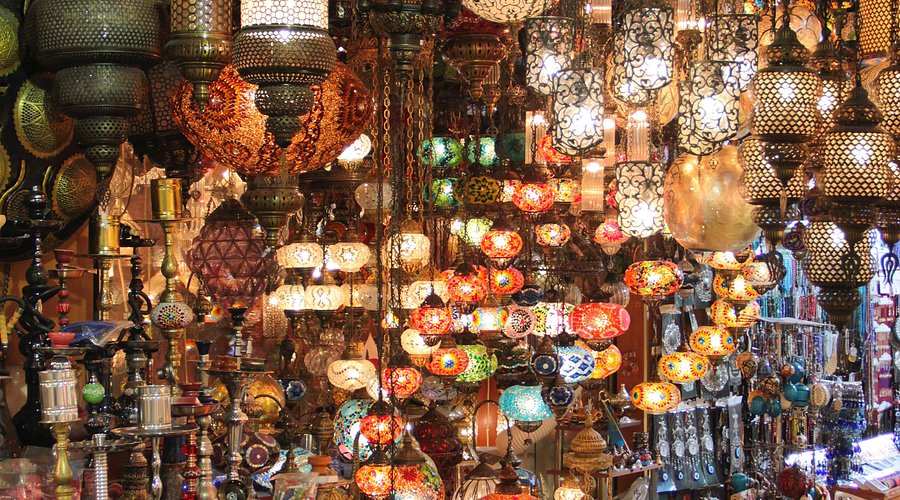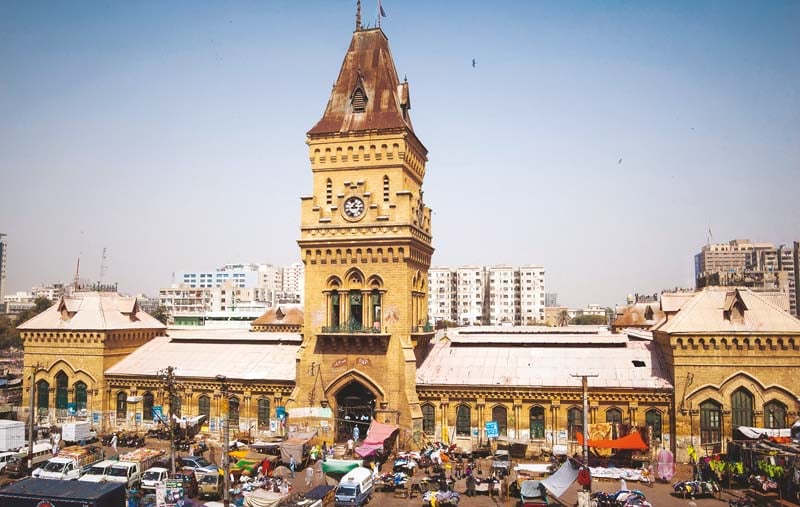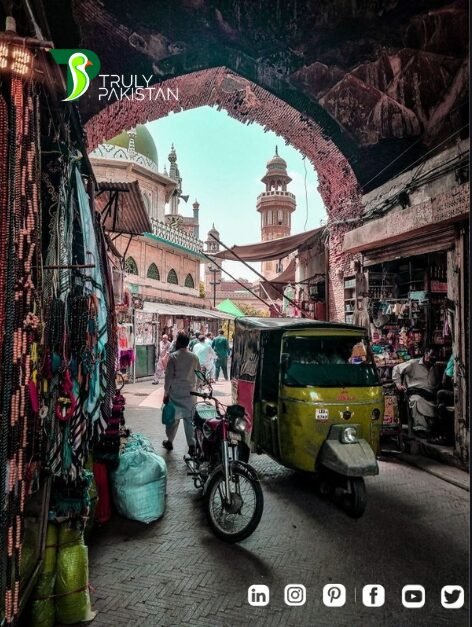Pakistan’s bazaars are much more than places to shop—they are dynamic cultural and economic hubs that offer a window into the heart of the nation. These bustling bazaars reflect the rich heritage, vibrant traditions, and everyday life of Pakistan, acting as living museums where history, art, and commerce converge.
In this blog, we will explore the unique allure of Pakistani bazaars by delving into their historical evolution, examining modern-day experiences, and analyzing their socio-economic impact. Readers can expect an in-depth, explanatory narrative that not only highlights the timeless charm of these markets but also illustrates how to continue to shape and influence community life.
Historical Context


Picture by: https://www.tripadvisor.com/
Origins and Evolution
The story of Pakistani bazaars begins in ancient times, when these marketplaces served as essential nodes along vibrant trade routes. Historically, bazaars emerged as humble trading posts where local merchants exchanged goods such as spices, textiles, and handicrafts. Over centuries, these early market systems evolved into complex and bustling centers that not only facilitated commerce but also reflected the rich cultural tapestry of the region.
As trade expanded, bazaars transformed from simple gathering spots into vibrant urban centers. Their strategic locations along ancient caravan routes allowed them to grow, serving as melting pots for diverse cultures, languages, and ideas. This evolution laid the groundwork for the dynamic and multifaceted bazaars seen in Pakistan today, illustrating how these marketplaces became integral to both economic and social life.
Cultural Significance
Beyond their economic role, bazaars have long been at the heart of community interactions and cultural exchange. They are places where people from various backgrounds converge to share traditions, stories, and customs. The lively atmosphere of Pakistani bazaars fosters a unique sense of community, where the exchange of goods is paralleled by the sharing of cultural experiences.
Historical bazaars have also played a crucial role in shaping local customs and traditions. They have been the stage for festivals, public gatherings, and cultural performances, making them key contributors to the region’s social fabric. Today, the legacy of these bazaars is evident in the way they continue to influence local lifestyles, serving as a living reminder of the rich heritage and communal spirit that have defined the history of Pakistani bazaars.
By tracing their origins and understanding their cultural significance, we gain a deeper appreciation for how Pakistani bazaars have evolved into the dynamic hubs they are today, seamlessly blending economic activity with cultural tradition.
Architectural and Urban Significance


Picture by: https://tribune.com.pk/
Design and Layout
Pakistani bazaars are renowned for their distinctive architectural features that seamlessly blend form and function. Traditional bazaars are characterized by intricate archways, spacious corridors, and open courtyards, which not only enhance the aesthetic appeal but also facilitate smooth movement and natural ventilation. These design elements reflect the historical ingenuity behind market planning, where functionality was balanced with visual grandeur. Urban planners recognized the central role of bazaars in city life, and thus, these marketplaces were often strategically located at the heart of urban centers, serving as vital nodes for trade and social interaction. The layout of these bazaars, with interconnected lanes and designated zones for different types of goods, underscores their importance as the lifeblood of community commerce.
Aesthetic Appeal
The aesthetic charm of Pakistani bazaars lies in their unique blend of historical allure and modern vibrancy. While the traditional structures evoke a sense of nostalgia with their time-honored craftsmanship and detailed ornamentation, modern interventions have added a refreshing layer of dynamism without diluting the original character. Iconic bazaars such as Lahore’s Anarkali and Karachi’s Empress Market stand as prime examples, celebrated for their unique structural elements and the colorful tapestry of life they host.
These marketplaces not only offer a feast for the eyes but also serve as cultural landmarks that narrate the rich heritage and evolving spirit of Pakistani bazaars. Together, the architectural finesse and urban planning of these markets continue to make them indispensable hubs that capture the essence of Pakistan’s past and present.
Diversity of Goods and Services
Pakistani bazaars offer an extraordinary array of goods and services that reflect the country’s rich cultural heritage and diverse artistic traditions.
Artisanal Crafts and Handicrafts
Within these lively bazaars, you’ll find a treasure trove of handcrafted items. Local artisans create exquisite textiles, intricately designed pottery, vibrant jewelry, and decorative art that showcase age-old techniques passed down through generations. These unique items not only serve as functional objects but also as works of art, each piece telling a story of local tradition and craftsmanship that remains at the heart of Pakistani bazaars.
Local Cuisine and Street Food
No visit to a Pakistani bazaar is complete without sampling the mouthwatering local cuisine. The markets are bursting with culinary delights—from traditional snacks and aromatic spices to a variety of street food specialties. Visitors can indulge in everything from spicy kebabs and savory samosas to sweet treats like jalebi, making the food offerings an integral part of the sensory experience in these vibrant bazaars.
Fashion and Textiles
Fashion plays a prominent role in the allure of Pakistani bazaars. The markets are renowned for their rich collection of local fabrics, stylish clothing, and intricate embroidery. Whether it’s a handcrafted shawl, a beautifully embroidered kurta, or a modern fusion piece, the textiles available in bazaars capture the essence of Pakistan’s traditional artistry while embracing contemporary trends.
Unique Offerings
Beyond the expected, Pakistani bazaars offer an eclectic mix of products and services that cater to both locals and tourists. From traditional herbal remedies and antique artifacts to modern gadgets and fashion accessories, these markets are a melting pot of cultural diversity. This wide-ranging selection not only satisfies various consumer needs but also enriches the overall experience, making bazaars a true reflection of the dynamic and multifaceted spirit of Pakistan.
By showcasing the vibrant diversity of goods and services, this section highlights how Pakistani bazaars serve as cultural hubs where traditional crafts coexist with modern trends, creating a unique and enriching marketplace experience.
Social and Economic Impact
Economic Backbone
Pakistani bazaars are a driving force behind local economies, acting as vital platforms for small businesses and artisans. These vibrant marketplaces empower local entrepreneurs by providing a space where handcrafted goods, traditional textiles, and innovative products are bought and sold. By fostering an environment of entrepreneurship, bazaars contribute significantly to job creation and community development. Small vendors, craftsmen, and service providers rely on bazaars for daily income, thereby strengthening the economic fabric of neighborhoods. In addition, the continuous flow of commerce in these bazaars helps stimulate local industries and sustains a wide range of livelihoods, ensuring that economic growth remains inclusive and culturally grounded.
Cultural and Social Hub
Beyond their economic influence, bazaars serve as dynamic meeting points that bring communities together. They are much more than commercial centers; they are social hubs where people gather to exchange ideas, celebrate traditions, and build lasting relationships. In Pakistani bazaars, the interplay between commerce and tradition creates a unique atmosphere where cultural exchange thrives.
The lively interactions among diverse groups—be it local residents or visitors from afar—transform these markets into spaces of vibrant social cohesion. Bazaars host community events, cultural performances, and seasonal festivals that not only enrich the cultural landscape but also reinforce a sense of belonging among community members. This harmonious blend of commerce and culture highlights how bazaars remain integral to the social and economic vitality of Pakistan, continually nurturing both cultural pride and innovative growth.
By supporting small businesses, generating employment, and acting as centers for cultural exchange, Pakistani bazaars stand as the economic backbone and social heart of the nation. Their enduring impact underscores the importance of preserving these historical marketplaces as essential contributors to both economic prosperity and communal identity.
Contemporary Experience and Tourism
Modern-Day Vibe
Visiting Pakistani bazaars is an immersive sensory journey. Stepping into a bustling bazaar, you’re greeted by a kaleidoscope of vivid colors—from vibrant textiles and ornate handicrafts to the dazzling displays of spices and produce. The air is rich with diverse aromas: the tantalizing scent of street food, aromatic spices, and freshly brewed tea blend with the natural fragrances of local flowers and incense. Accompanying these sensory delights is a lively soundscape—the rhythmic chatter of vendors, the clamor of footsteps on cobbled paths, and occasional traditional music, all contributing to the vibrant pulse that defines Pakistani bazaars.
Blending Tradition with Modernity
Pakistani bazaars are a perfect blend of age-old tradition and contemporary innovation. While the bazaars remain steeped in history and cultural authenticity, modern trends have seamlessly integrated into their framework. Digital payment systems and social media promotions are now common, allowing vendors to reach wider audiences without compromising their traditional practices. This harmonious fusion ensures that while technology enhances convenience, the timeless charm of Pakistani bazaars is preserved. The result is a dynamic marketplace experience where the historical essence of the bazaars is celebrated alongside modern innovations, providing visitors with an experience that is both nostalgic and forward-thinking.
This contemporary perspective on Pakistani bazaars captures the enduring appeal of these vibrant hubs, inviting both locals and tourists to experience a unique blend of tradition, culture, and modernity.

